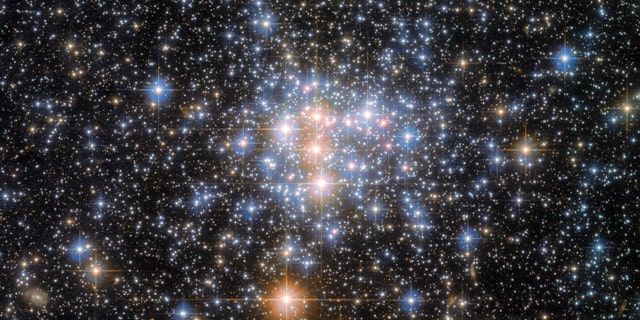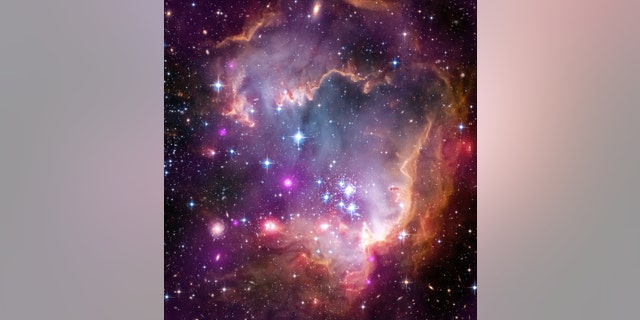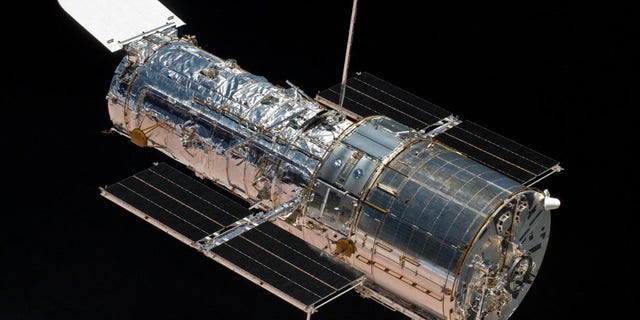A recent Hubble Telescope image reveals the star-studded open cluster known as NGC 376.
Scientists say it’s nearly a miracle that the pristine image can retain star-making material in the first place, according to a new report from Space.com.
“For billions of years, the Milky Way’s most massive companions – the Large and Small Magellanic Clouds – have been on a tumultuous journey through space, orbiting one another while being torn by the gravitational pull of our own galaxy,” Hubble researchers said in a description of a September 2022 study.
Located in the Small Magellanic Cloud, a dwarf galaxy nearly 200,000 light-years from Earth, NGC 376 has a total mass of only about 3,400 times that of the sun, according to the European Space Agency.
WEBB SPACE TELESCOPE REVEALS STELLAR CLUSTERS FROM DISTANT GALAXIES

A small portion of the Small Magellanic Cloud (SMC) is pictured in this image from the NASA/ESA Hubble Space Telescope. (Credit: ESA/Hubble & NASA, A. Nota, G. De Marchi)
The Small Magellanic Cloud contains hundreds of millions of stars and makes a pair with the Large Magellanic Cloud. Both objects can be seen from the Southern Hemisphere and some northern latitudes.
The study said recent theoretical predictions suggested that dwarf satellite galaxies must be protected by a pervasive shield – or a Magellanic Corona – that prevents the Milky Way from removing their essential star-forming gas.

The tip of the “wing” of the Small Magellanic Cloud galaxy is dazzling in this 2013 view from NASA’s Great Observatories. The Small Magellanic Cloud, or SMC, is a small galaxy about 200,000 light-years way that orbits the Milky Way spiral galaxy. (NASA/CXC/JPL-Caltech/STScI)
WEBB SPACE TELESCOPE ‘UNEXPECTEDLY’ FINDS ITS SMALLEST ASTEROID YET
“This so-called Magellanic Corona, made of supercharged gas with temperatures of half a million degrees, would act as a sort of cosmic crash zone around the Magellanic Clouds, keeping the stars and disk relatively unscathed during collisions,” it said.

An astronaut aboard the space shuttle Atlantis captured this image of the Hubble Space Telescope on May 19, 2009. (NASA)
Open clusters like NGC 376 are loosely bound and sparsely populated, distinguishing characteristics from globular clusters.
CLICK HERE TO GET THE FOX NEWS APP
Data from two Hubble Space Telescope instruments, the Wide Field Camera 3 (WFC3) and the Advanced Camera for Surveys (ACS), were used to make the image.
